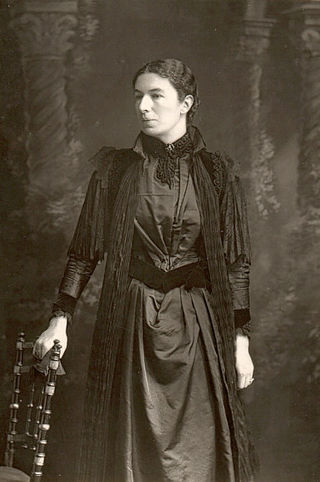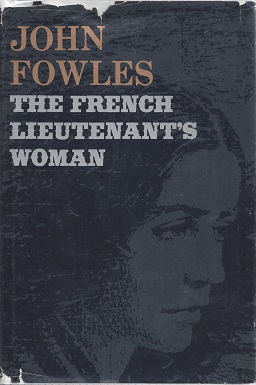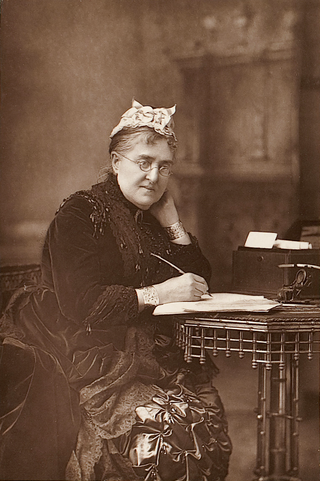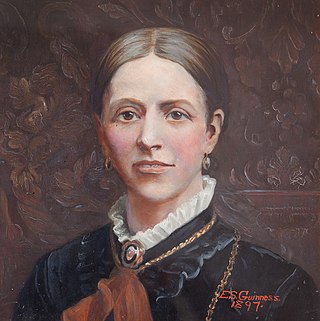Feminist science fiction is a subgenre of science fiction focused on such feminist themes as: gender inequality, sexuality, race, economics, reproduction, and environment. Feminist SF is political because of its tendency to critique the dominant culture. Some of the most notable feminist science fiction works have illustrated these themes using utopias to explore a society in which gender differences or gender power imbalances do not exist, or dystopias to explore worlds in which gender inequalities are intensified, thus asserting a need for feminist work to continue.
Science fiction and fantasy serve as important vehicles for feminist thought, particularly as bridges between theory and practice. No other genres so actively invite representations of the ultimate goals of feminism: worlds free of sexism, worlds in which women's contributions are recognized and valued, worlds that explore the diversity of women's desire and sexuality, and worlds that move beyond gender.

Mary Augusta Ward was a British novelist who wrote under her married name as Mrs Humphry Ward. She worked to improve education for the poor and she became the founding President of the Women's National Anti-Suffrage League.

The French Lieutenant's Woman is a 1969 postmodern historical fiction novel by John Fowles. The plot explores the fraught relationship of gentleman and amateur naturalist Charles Smithson and Sarah Woodruff, the former governess and independent woman with whom he falls in love. The novel builds on Fowles' authority in Victorian literature, both following and critiquing many of the conventions of period novels.

Eliza Lynn Linton was the first female salaried journalist in Britain and the author of over 20 novels. Despite her path-breaking role as an independent woman, many of her essays took a strong anti-feminist slant.
Mizora is a feminist science fiction utopian novel by Mary E. Bradley Lane, first published in 1880–81, when it was serialized in the Cincinnati Commercial newspaper. It appeared in book form in 1890. Mizora is "the first portrait of an all-female, self-sufficient society," and "the first feminist technological Utopia."

Alice Mona Alison Caird was an English novelist and essayist. Her feminist writings and views caused controversy in the late 19th century. She also advocated for animal rights and civil liberties, and contributed to advancing the interests of the New Woman in the public sphere.

Shafts was an English feminist magazine produced by Margaret Sibthorp from 1892 until 1899. Initially published weekly and priced at one penny, its themes included votes for women, women's education, and radical attitudes towards vivisection, dress reform, women's control of their sexuality, child care, and vegetarianism.

Three Hundred Years Hence is a utopian science fiction novel by author Mary Griffith, published in 1836. It is the first known utopian novel written by an American woman. The novel was originally published in 1836 as part of Griffith's collection, Camperdown, or News from Our Neighborhood, and later published by Prime Press in 1950 in an edition of 300 copies.
A relatively common motif in speculative fiction is the existence of single-gender worlds or single-sex societies. These fictional societies have long been one of the primary ways to explore implications of gender and gender-differences in science fiction and fantasy. Many of these predate a widespread distinction between gender and sex and conflate the two.

Unveiling a Parallel: A Romance is a feminist science fiction and utopian novel published in 1893. The first edition of the book attributed authorship to "Two Women of the West". They were Alice Ilgenfritz Jones and Ella Robinson Merchant, writers who lived in Cedar Rapids, Iowa.
Arqtiq: A Story of the Marvels at the North Pole is a feminist utopian adventure novel, published in 1899 by its author, Anna Adolph. The book was one element in the major wave of utopian and dystopian fiction that marked the later nineteenth and early twentieth centuries.
For the silent film see The Great Romance (film)

A Crystal Age is a utopian novel/Dystopia written by W. H. Hudson, first published in 1887. The book has been called a "significant S-F milestone" and has been noted for its anticipation of the "modern ecological mysticism" that would evolve a century later.
A Prophetic Romance: Mars to Earth is an 1896 utopian novel written by John McCoy, and published pseudonymously as the work of "The Lord Commissioner," the narrator of the tale. The book is one element in the major wave of utopian and dystopian literature that characterized the final decades of the nineteenth century.
Moving the Mountain is a feminist utopian novel written by Charlotte Perkins Gilman. It was published serially in Perkins Gilman's periodical The Forerunner and then in book form, both in 1911. The book was one element in the major wave of utopian and dystopian literature that marked the later nineteenth and early twentieth centuries. The novel was also the first volume in Gilman's utopian trilogy; it was followed by the famous Herland (1915) and its sequel, With Her in Ourland (1916).
The New Paul and Virginia, or Positivism on an Island is a satirical dystopian novel written by William Hurrell Mallock, and first published in 1878. It belongs to the wave of utopian and dystopian literature that characterized the later nineteenth century in both Great Britain and the United States.
Elizabeth Burgoyne Corbett (1846–1930), also known as Mrs George Corbett, was an English feminist writer, best known for her novel New Amazonia: A Foretaste of the Future (1889).

Caroline Ashurst Biggs was an advocate for women’s rights and a third generation member of the Ashurst family of radical activists. Born in Leicester on 23 August 1840, she was the second child of Matilda Ashurst Biggs and Joseph Biggs. She died at 19 Notting Hill Square in London on 4 September 1889. At the World's Columbian Exposition in Chicago in 1893, her photograph was included in an exhibition of Portraits of Eminent British Women, in a section devoted to Pioneers in Philanthropy and General Advancement of Women.
Annie Denton Cridge (1825–1875) was a UK-born suffragist, socialist, lecturer, and author. She moved to the United States around 1842 during the industrial and Victorian eras. Cridge was an author who wrote primarily about women's rights and spiritualism. In the mid-nineteenth century, spiritualism was considered the only religious group that recognized the equality of women. Ann Braude, in her book, Radical Spirits, defines spiritualism as "a new religious movement aimed at proving the immortality of the soul by establishing communication with the spirits of the dead… It provided an alternative to the established religious order. It held two attractions to thousands of Americans: rebellion against death and rebellion against authority".

The Crow Garden is a historical fantasy and horror novel by English writer Alison Littlewood. It was first published in the United Kingdom in October 2017 by Jo Fletcher Books. Set in Victorian England, the book is about an alienist who becomes infatuated with an enigmatic patient of his at a lunatic asylum in Yorkshire.









